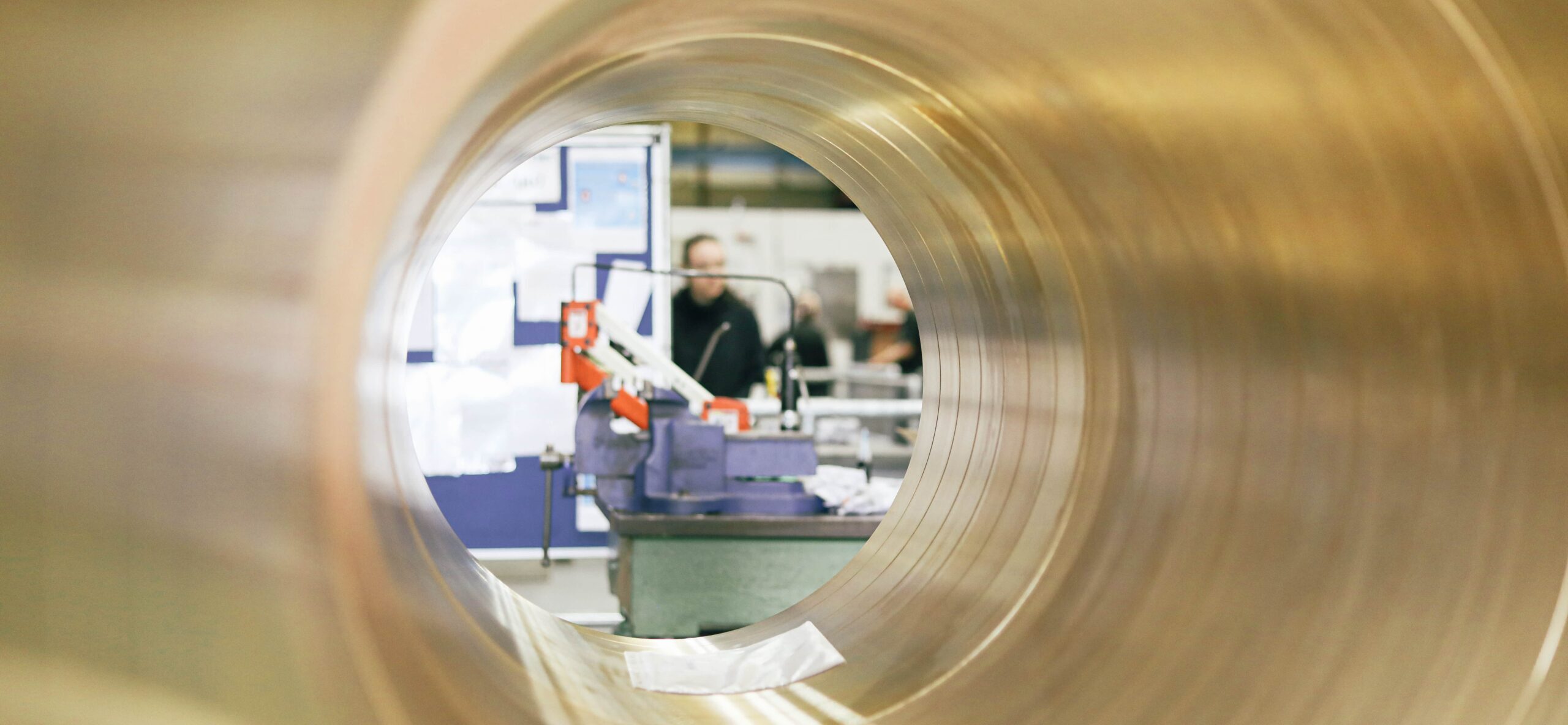When Aluminium Bronze is the Solution

When Aluminium Bronze is the Solution
Each metal has its strengths and weaknesses when it comes to component design and performance. The Cast Metals Federation gives us an insight into which criteria would encourage a component designer to select aluminium bronze castings.
There are a large number of castable copper-based alloys covering high conductivity coppers, bronzes, brasses, gunmetals and aluminium bronzes, each of which have been developed to exploit copper’s fundamental and unique physical properties and benefits.
Those benefits include:
– high corrosion resistance
– low friction surfaces
– high thermal and electrical conductivity
– non-sparking
– metallurgical stability over wide temperature ranges
These properties have ensured that copper based alloys have become fundamentally important in a range of specialist niche applications in various world markets.
From the high conductivity copper castings primarily used for very specialist applications such as blast furnace cooling components and tuyeres, electrode holders for arc melters and welding machinery, through to the copper-zinc alloyed brasses used for valves and decorative items, the corrosion resistance and bearing qualities of tin alloyed bronzes through to the very dense lead bronze or gunmetal, each has a key characteristic that makes it ideal for certain applications.
Aluminium Bronze (Cu-Al) is no exception. With aluminium as the main alloying element, castings combine high strength with high corrosion resistance. From boat propellers to architectural items, sculptures to a whole host of seawater applications including pumps and valves, Aluminium Bronze is widely used to deliver long life, maintenance free solutions in seawater and other corrosive environments.
Primarily developed since the 2nd World War, Cu-Al is copper with typically 8-10% aluminium, plus other iron and nickel additions to optimise corrosion resistance. These alloys are mechanically strong, with physical strength properties similar to mild steel, while the mix of alloying elements has been developed to ensure that coherent protective oxide coatings develop, giving excellent corrosion properties in aerated seawater applications. These short freezing range alloys produce a dense cast structure in thick or thin wall sections. They are also price competitive against some of the more advanced and complex stainless steel alloys.
The oxidised coating naturally occurs in air and forms a protective film which slows down and inhibits further corrosion. If the surface is damaged then it reforms the film naturally and quickly. Typical corrosion rates in sea water are less than 0.05mm/year. Cu-Al also has generally high resistance to pitting attack in high chloride situations such as chemical plants. Corrosion resistance of castings can be further improved by heat treatment of 675±25ºC for 4-6 hours plus air cooling and is particularly advantageous after welding.
Seawater Applications
The primary use for Cu-Al is in the wide range of applications involving sea and brackish water, which accounts for 90% of the water on the planet. Seawater is highly corrosive to metal, especially warmer seawater but, due to the oxide coating formed by Cu-Al, it is inherently resistant to all kinds of corrosion, including pitting, crevice, stress and erosion.
Offshore, it is used for pumps, impellers, firewater systems and many other casting applications. Aluminium bronzes also have a key benefit for offshore oil and gas installations of being non-sparking, making it ideal for use in hazardous environments where a ‘metal on metal’ spark could set off an explosion. Indeed, whole tool kits are made of Cu-Al for use offshore and on oil and gas tankers.
A majority of the world’s ships propellers are made from the metal, withstanding fast water speed, and the pump and pipe systems of desalination plants and seawater cooled power stations are also largely made from these alloys.
Metallurgically tough, Cu-Al alloys are unlikely to crack in shock loading situations. It also carries another key seawater benefit in that the copper content reduces fouling due its naturally biocidal properties. This ensures that any build up of marine organisms is prevented with considerable savings in additional on going maintenance costs. The effectiveness of this biocidal function is shown by the fact that many ships hulls are coated with the metal to keep them naturally clean to improve their efficiency.
Aesthetics
Increasingly Cu-Al alloys are being used in architectural applications where their corrosion resistance and strength make them suitable for structural and aesthetic applications such as the structural window castings and the roof of Portcullis House in Westminster London. Initially an expensive option, over the lifetime of a building, taking into account lack of maintenance requirement, the biocidal resistance and the fact that it will last ‘forever’, all make its use much more cost effective in the long term.
Sculptures are also widely cast in the metal for their ‘last for ever’ characteristics, accurate castability and aesthetic finish.
Conclusions
The high initial cost of copper means that any copper alloy casting starts at a premium cost. However, taking their long lifetime advantages, particularly in corrosive environments, the whole lifetime cost savings of using Cu-Al and copper alloy castings can far outweigh that initial cost disadvantage, particularly in critical areas and after taking into account the cost of maintenance in arduous and difficult environments. For this reason copper alloys, and Cu-Al in particular, have become the metals of choice for many corrosive and demanding environments.
The Cast Metals Federation would like to thank Westley Group Ltd for their help compiling this article and for the supply of the photographs. www.westleygroup.co.uk
Representing the UK foundry industry, the Cast Metals Federation has members offering casting solutions in every metal, quantity, size and process, and offers buyers of castings a direct link to the ‘Best of British Casting’ through its website www.castmetalsfederation.com




